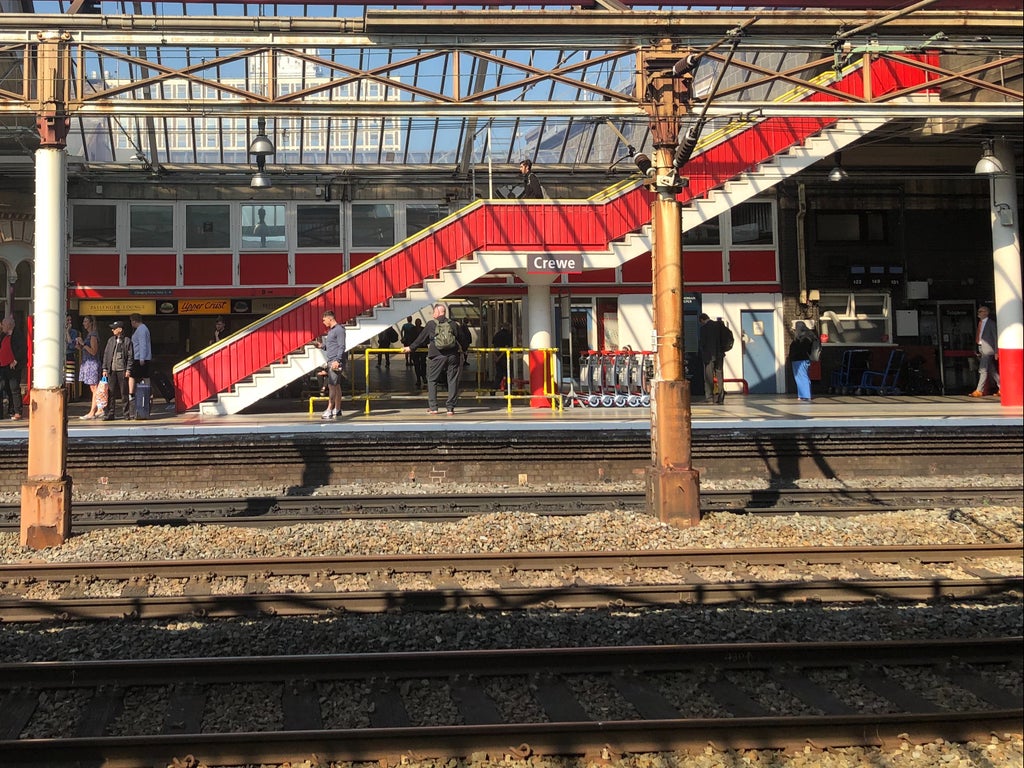
Today’s column begins at the most distant reaches of York station: platform 11, adjacent to the magnificent National Railway Museum. Two centuries of rail heritage are easily accessible to travellers from across England and Scotland – making York a contender for the headquarters of Great British Railways (GBR).
This is the body that, from next year, will be responsible for “growing the network and getting more people travelling” by train.
“Great British Rail will integrate the railways and deliver simpler, cheaper, passenger-focused travel,” says the Department for Transport. Evidently, the exact name of the organisation is still to be settled – as is the location for its HQ.
Nominations are now open for the town or city that most deserves the jobs, investment and doubtless improved rail links that will accompany GBR. “We’ll be asking the public to vote on the finalists,” says transport secretary Grant Shapps.
“Government by game show,” is how the journalist, Bill Rogers, sums up the plan. Since the game is on, let’s look at the runners and riders. Some criteria are baffling, such as “a location that will deliver effective synergies with other levelling-up initiatives”. But two are clear:
1. “Connected and easy to get to.”
2. “The competition will recognise towns and cities with a rich railway history.”
A vast number of places are disqualified because towns and cities with good connections “to the nations and regions of Great Britain” are relatively rare.
As I found when I investigated the rail connectivity of the dozen biggest cities outside London, some important locations – notably Cardiff and Leicester – currently have poor connections with places in southern Britain, and none at all with Scotland.
Bradford has been disqualified by the government’s decision to exclude the West Yorkshire city from the Northern Powerhouse Rail project. Southwest England and East Anglia are likewise excluded.
Among big cities of the Midlands and north, Birmingham has easily the best connections – but, as home to the HS2 project, it surely cannot be a contender as HQ for another massive rail organisation.
Manchester, where my train from York has just arrived after a 75-minute journey, has heritage and connectivity. The organisation might usefully look at accelerating transPennine journeys by removing the bizarre 15-minute wait at Manchester Victoria that the current timetable insists upon. But as the most thriving city in the north of England, the potential dividend for “levelling up” – whatever that means, exactly – may be minimal.
Relative prosperity will also disqualify York.
Three finalists present themselves:
1. Crewe – a town effectively created by the railway. “Trains run frequently to many parts of England, Wales and Scotland,” says travel analyst Sean Moulton. “The town is the obvious choice for the new home of GBR.”
2. Darlington, one end of the first public railway to use steam locomotives, with good connections on the East Coast Mainline and to the Hitachi rail factory at Newton Aycliffe just north.
3. Derby: “A city synonymous with engineering, with a peerless railway history and the birthplace of the high-speed train,” says Ben Bradgate – and, despite the absence of electrification in these parts, reasonably well-connected.
The public’s vote will be only advisory, so let me talk you through the process of elimination.
Darlington is already promised the Treasury, which leaves a straight fight between Crewe and Derby. With the HS2 eastern leg serving Derby (and Nottingham and Leeds) already abandoned but the western leg on course for Crewe, my money is on the latter. And as I step from the train on platform three at Liverpool Lime Street, the next departure from platform two is … Crewe.
You read it here first.







